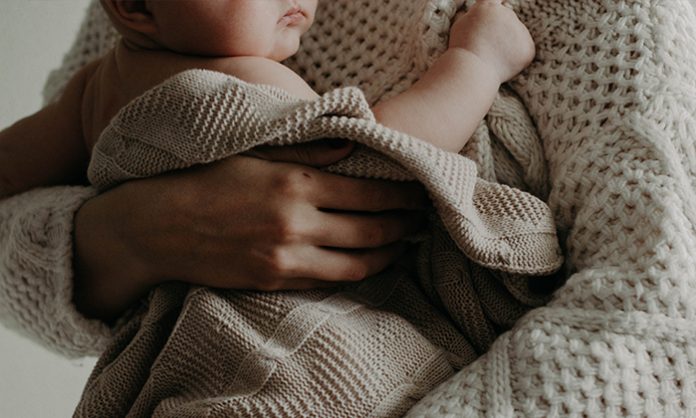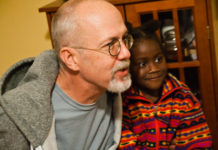I began to think about Aster’s birth mother long before the nanny handed her to me. It took many months for my daughter’s biological mother not to enter into my daily thoughts. I felt such deep sadness for this child who, we were told, would never have the opportunity to know the woman who birthed her. She supposedly had no other blood relatives, so seeking out her birth family would never be an option for Aster. Ours has been a long and unplanned but methodical process that took many odd twists and turns, and in the end proved that not everything you believe to be the truth really is. Though at times ignorance can be bliss, this has never been my motto, nor has it proven to be true. Knowing what is gives me the opportunity to make my own choices: I can choose to accept what I know to be true and deal with the sadness, fear, or anger, or I can bury my head in my hands and pretend I do not see. Most of my life I have wished I were the type who could live blind. But that has not been my destiny. For better or worse, I have always wanted to know the truth.
About five months after we returned, we needed to finalize Aster’s adoption in the United States. In part, this meant getting her a birth certificate in the state of New Mexico. Because at the time of her referral, as mentioned in an earlier chapter, we had not been given a date of birth for her, I decided to check just one more time with our agency. I still had not gotten past the communication discrepancies that began at the time of our referral that only specified a birth month, but no date. No last name. No living relatives. How could this be if she were not one of the orphans supposedly found in a box picked up by the police, a story often given as the child’s social history? At one point our agency said that Aster had been handed over by one of her birth mother’s neighbors. If this were indeed the truth, then somewhere, somebody had lied; I never accepted how little information we were given. From current research I now know that the story we were told is common: mother too sick and/or poor, father unknown. Before Aster became a legal citizen of the United States of America, I needed to let my concerns go. I could not afford to irritate the wrong person for fear, I thought, that our adoption would for some ridiculous excuse be halted.
A few weeks prior to leaving for Ethiopia I needed a birth date so we could apply for Aster’s health insurance. Because we had none we made one up. Then, out of the blue, just about ten days prior to our departure, in a one-line email, Aurora wrote that Aster did indeed have a birth date in November and further stated that it was her birth mother who had said as much. When I phoned Aurora I asked in an incredulous tone how suddenly, after so little information from the very start, she could know the exact date of our daughter’s birth? More than six months after she had given her baby girl up for adoption she was obviously still alive and well enough to tell somebody what day she gave birth to Aster. Aurora curtly told me that some undisclosed person in their Mekele care center had told them, I know Aster. She was born.
How, after nearly six months of no communication, did Aster’s birth mother mysteriously surface? I just could not get past the strange manner in which this vital information had been conveyed. But again, I ignored it. I promised myself that I would deal with this odd news after we returned with our daughter, safe and sound in the United States.
Several months after returning from Africa, as we prepared to get Aster a New Mexico birth certificate I contacted the current agency director. I shared with him what our rep had told us about Aster’s birth date, and because we needed something official for our adoption attorney to present to the court, I asked him to please send us something on his letterhead. This was vital because according to other records, her Ethiopian visa for example, her date of birth was the one we had made up. You can’t just pick a birth date out of your pocket if indeed there is a real date available. We needed to know for sure. Aster had a right to know. Brian and I both felt strongly that it would eventually be important for her to know the day she was born, if indeed that information was available. I would never be able to forgive myself for not trying as hard as I possibly could to get her what I believed she needed: to know the day she was born. Everybody has a right to know this simple fact.
Naturally, we had been told that Ethiopia is a developing country, and when babies are born, mostly not in a hospital, there is no recording of this information. The orphanage nanny likely creates any date that is given to an adoptive parent. I had accepted this in the beginning. The made-up date is the one we had written on the Child Referral Acceptance Form, and this is why the Ethiopian government used it to finalize her adoption in that country. But when our rep emailed me an actual date, I pasted the email into Aster’s Lifebook. To me, and one day to her, this would make it real enough. That would be the date that we would annually celebrate as her day of birth. And I would deal with other records back in the States upon our return.
When I contacted our agency director requesting he send us something official regarding Aster’s birth date to give to our attorney, I received a few strongly worded emails indicating that whatever our representative had written us was wrong. One of his emails explained that when he had confronted our rep about our request, she denied ever having sent us the email with Aster’s birth date, as per her mother. Of course I had the original pasted in Aster’s Lifebook, which I easily copied and mailed to both of them. Then, furious and frustrated as I was, I let the whole thing go.
We decided then that because there was so much seeming deceit and confusion surrounding Aster’s birth that we would make her birthday the most useful date for her, one that would allow her to enter school at five, and not six. She was exhibiting advanced fine and gross motor skills for her supposed age, so our attorney told us that we should consult her pediatrician to get an approval to change her birth date from that which was written on her Ethiopian birth certificate. She would speak with the judge and state the facts that often no birth records are kept in Ethiopia, and often dates are made up just to satisfy the legal aspects of adopting an orphan into another country. Aster’s doctor agreed that she could have been born earlier. Even if the height and weight charts would deem her in a low percentile according to U.S. standards, there was enough other evidence for her to approve an August birth date.
One of Aster’s foster sisters was adopted into a home in the Northeast shortly before Aster’s second birthday. I had become close with her adoptive mom because we used the same agency and had been communicating regularly. She is a social worker with grown kids. Her adopted teenage Ethiopian daughter barely made it out of Africa, due to her age, but thanks to the determination of her new mom, she is now a U.S. citizen.
Shortly after she arrived, I phoned to say hello and to thank her for the gifts that she had carried all the way from Mekele and mailed to us. Aster’s nannies had asked this young woman to send Aster a traditional Ethiopian skirt and matching top and make sure we knew it was from them. This gesture touched me deeply, as it showed how Aster had been cared for; she hadn’t just been a nameless child in some mass orphanage. I told Aster’s foster sister that we were about to celebrate Aster’s second birthday, even though we made up the date because we were never actually told the date she was born.
Oh, would you like me to ask her mother? she said.
This innocent, generous question opened a door that had been locked shut since the very beginning of our connection with Aster. I was stunned speechless. Until I replied, Aster’s mother is alive? What do you mean?
Yes of course, I know her.
Shortly after this conversation, summer 2009, stories such as this began to flood the blogs and Ethiopian chat groups online. Countless adoptive parents of Ethiopian children are discovering that the circumstances surrounding their child/children’s adoption were false. Now, in mid-2010, the non Hague-accredited country of Ethiopia may soon find that adoptions to parents living in Hague countries will no longer be possible. A plethora of solidly investigated reports tell of older children who, once they acquire the language to speak, share with their adoptive parents that they have a parent (or two), siblings, and other extended family living back home in Ethiopia.
A report in late December 2009 from Australian ABC TV’s Foreign Correspondent indicated that the Australian government had been alerted to some not-so-transparent adoption practices in Ethiopia and they suspended all adoptions from that country. This news report exposed some serious trouble going on in the Ethiopian adoption system. The report disclosed the government’s fear that children were being plucked from their birth families, and some mothers claimed they were tricked into giving up their children. A few months later this same news outlet reported that some children labeled orphan in actuality have families. Further, some were being advertised, so to speak, to adoptive families as being years younger than they actually were.
News reports like this widely publicized Australian one are becoming quite common. The fact is that in 2010 Ethiopia still has not signed the Hague Convention on intercountry adoption, yet hosts numerous adoption agencies that are Hague accredited and claim to have a high standard of practice. Even though this is a political issue, I choose to pose this question: Why is the Hague-accredited United States even allowing adoptions from countries that have not ratified the Hague Convention? Had I known then what I know now I cannot say that I would have taken the same path to our adoption. Ironically, however, the only reason I do know what I know is because of the path we took.
It is heartbreaking to think that the orphans of Ethiopia, having lost either one or both of their parents, may soon no longer have the opportunity to be adopted into families that will love and support them as they grow into healthy and well-adjusted Americans of Ethiopian descent. It is my hunch that the Ethiopian adoption program will not be in operation much longer. The United States needs to consider halting adoptions from Ethiopia, even if temporarily, as Australia did, until its government can take the time to enter into the Hague Convention on intercountry adoption and start a relationship with accredited countries that are committed to prevent the abduction, the sale of, or traffic in children for international adoptions.
I do, however, feel hopeful knowing that in July 2010 Secretary of State Hillary Clinton created a new foreign policy position at the U.S. State Department’s Office of Children’s Issues to focus on intercountry adoption and international parental child abduction. It is so exciting to realize that she appointed Ambassador Susan S. Jacobs as the Special Advisor of Children’s Issues and that on January 24, 2011, Ambassador Jacobs invited the public to attend via teleconference a forum on Ethiopia adoptions called Solutions into Action. The proposed agenda included this question: How do we move forward to ethically and transparently protect children, birth families and adoptive parents in Ethiopia?
A phone number and access code were listed on the State Department’s website, providing an opportunity for all interested to join the discussion. Not only were civilians, such as myself, allowed to listen in and ask questions via an intermediary, but representatives from government agencies, UNICEF, adoption service providers and NGOs were also present.
To me, this felt like the first step in making international adoption a more transparent endeavor. The information presented was often quite candid and reassuring, in that I discovered that the concerns that I and countless other adoptive and prospective adoptive parents of Ethiopian children harbor are shared and being taking seriously by every person in all aspects of the process. The Ethiopian government, American employees at the embassy in Addis Ababa, adoption care providers and adoption agencies many of those involved now seem to be on the same page.
Because at the start of this meeting it was announced that this is off the record, and that the minutes would be posted on the State Department’s website, I will let you, the reader, do your own research. The reason for adding this information to the Epilogue here is to share with you that transparency, honesty, and ethics have, even if perhaps only recently, become a great concern to those who have the power to oversee these adoptions. The meeting was enlightening and encouraging. For those who are interested, please keep this website bookmarked and check regularly for updates: http://adoption.state.gov/news/ethiopia.html.
After I learned that Aster’s birth mother was in fact not deceased, I, understandably, was livid. Once again, I became obsessed with uncovering the lies that we had been told in order for this adoption to happen with as little work as possible on the part of our adoption agency. Because the director of our agency refused to acknowledge my discovery, I went to the teen’s adoptive mom, who without hesitation gave me email addresses for employees of the Mekele orphanage. It wasn’t long before I heard back the startling, yet wonderful news, that not only was Aster’s birth mother alive, but Aster also has a half-sister, several uncles and an aunt. There still was no certain birth date, but at this point, that information seemed less vital than knowing our daughter had living blood relatives.
One day when the time comes, years from now, we will be able to provide Aster with the information that every adopted child should be privy to: a family name, and the names of family members to go with it. One day, before Aster becomes a teen herself, we will offer her the opportunity to visit her country of origin. We will take her to the place where she was born, and, if she wishes, help her meet the people who share her DNA.
What saddens me the most about international adoption is that transparency is not a given. It is my life’s work, perhaps, to encourage openness between adoption agency and adoptive parents, between those who rescue the children from a life of poverty, and those who take money to do so.
So as not to end this account of my adoption story on a negative note, I will say this: I love you, Aster. You are my best girl ever, and if and when you do read this, please know that you have lived inside my heart for lifetimes. There is no turning back now. You are my daughter. I am your mommy. And I thank you for being so filled with light. In the end, you need to know, it is you who saved me.
Editor’s Note: This is an excerpt from the newly released Inkwater Press book, Finding Aster. Available at Tapestry Books and other sellers.





































[…] InCulture Parent, an online magazine aimed at parents with international children, has posted an excerpt from Dina’s book and has also featured it in their New This Month category. Additionally, Adoption Today has also posted a review of Dina’s book. […]
[…] InCulture Parent, an online magazine about global parenting, has posted an excerpt from Dina’s book and has also featured it in their New This Month category. Additionally, Adoption Today has also posted a review of Dina’s book. […]